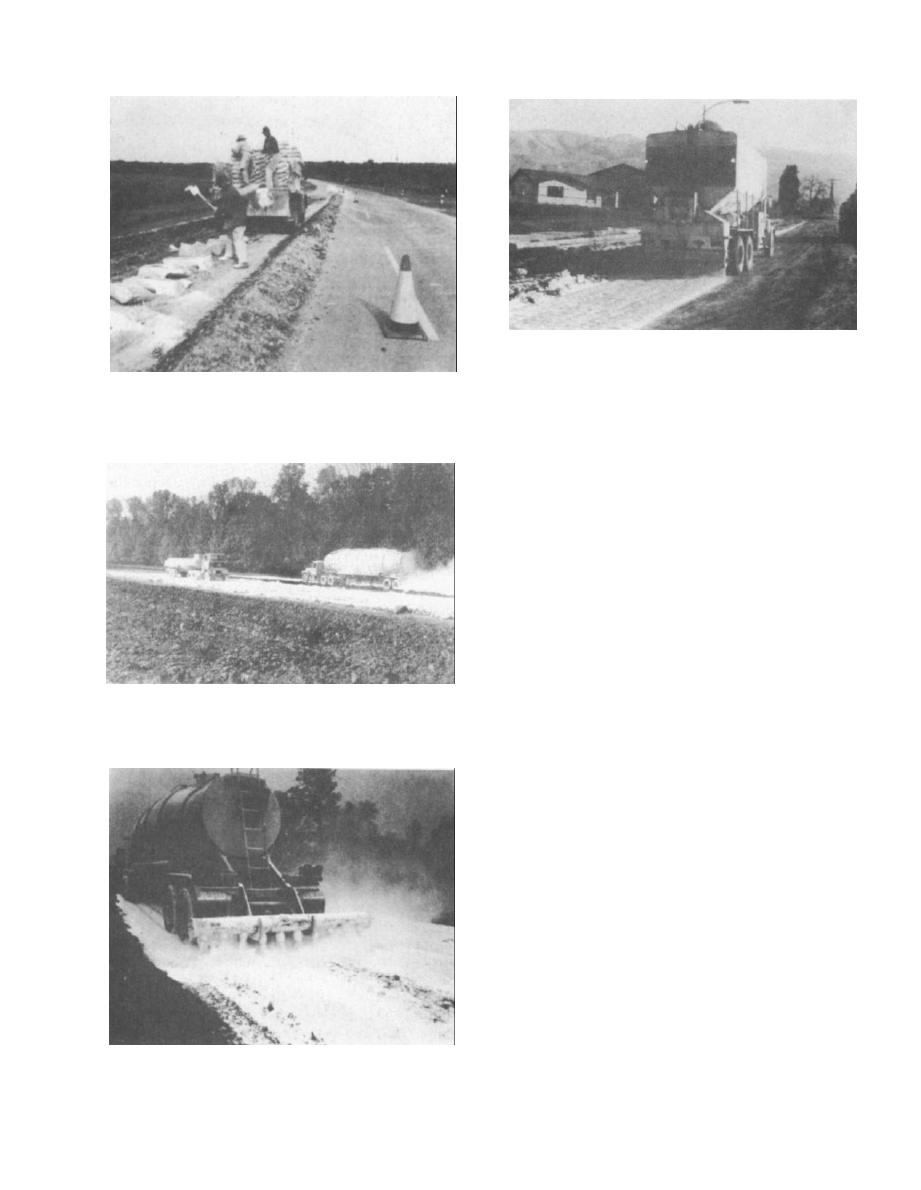
TM 5-822-14/AFJMAN 32-1019
Figure 4-27. Distribution of quicklime
from mechanical spreader on city street.
Figure 4-24. Application of lime by the bag
helps minimize the danger of burns. Quicklime
for a small maintenance project.
may be applied in the form of pebbles of approxi-
mately 3/8 inch, granular, or pulverized. The first
two are more desirable because less dust is gener-
ated during spreading. Bulk quicklime may be
spread by self-unloading auger or pneumatic trans-
port trucks, similar to those used for dry hydrate.
However, because of its coarser size and higher
density, quicklime may also be tailgated from a
regular dump truck with tailgate opening controls
to ensure accurate distribution (fig 4-28). Because
quicklime is anhydrous and generates heat on
contact with water, special care should be taken
during stabilization to avoid lime burns. Where
quicklime is specified, the contractor should pro-
vide the engineer with a detailed safety program
covering precautions and emergency treatment
available on the jobsite. The program should in-
Figure 4-25. Application of lime by a bulk pneumatic truck.
clude protective equipment for eyes, mouth, nose,
and skin, as well as a first-aid kit containing an
eyeball wash. This protective equipment should be
available on the jobsite during spreading and
mixing operations. The contractor should actively
enforce this program for the protection of the
workers and others in the construction area.
(c) Slurry method. In this method either
hydrated lime or quicklime and water are mixed
into a slurry. With quicklime, the lime is first
slaked and excess water added to produce the
slurry.
(d) Slurry made with hydrated lime. This
method was first used in the 1950s and is cur-
rently very popular, especially where dust from
using dry lime is a problem. The hydrated lime-
water slurry is mixed either in a central mixing
tank (fig 4-29), jet mixer (fig 4-30), or in a tank
truck. The slurry is spread over the scarified
roadbed by a tank truck equipped with spray bars
Figure 4-26. Bulk pneumatic truck spreading lime
(fig 4-31 and fig 4-32). One or more passes may be
from bar spreader.
4-14


 Previous Page
Previous Page
